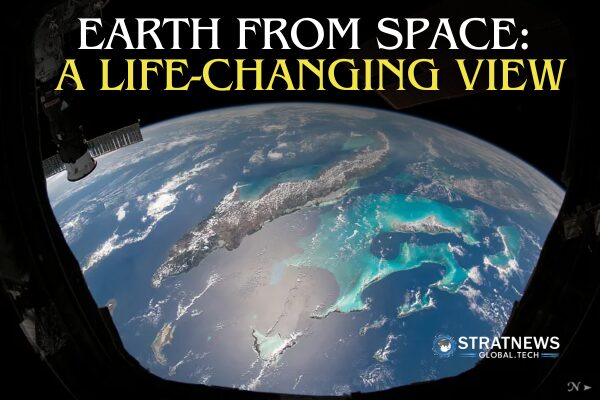As the world looks toward a new era of commercial spaceflight and global scientific collaboration, Virgin Galactic astronaut and astronomy educator Ron Rosano says the next generation is poised to play a defining role—especially young students pursuing space science for the first time.
In an exclusive conversation with StratNewsGlobal on the sidelines of the Mission ShakthiSAT Guest Lecture Series in Chennai, Rosano spoke about his journey to space, the transformative view of Earth from orbit, and why students around the world, particularly girls, must see themselves as part of humanity’s future in space.
“Looking back at Earth while floating weightless in space is a profound experience,” Rosano said.
“It’s a vibrant, electric blue planet, floating in darkness. And you realize—every living thing exists in this astonishingly thin atmosphere. That changes your sense of the world forever.”
The lecture was organized by Space Kidz India, a space startup headed by Dr Srimathy Kesan, founder and CEO.
Rosano flew aboard a Virgin Galactic suborbital mission in October 2023, spending three minutes in weightlessness and witnessing firsthand the curvature of Earth and the blackness of space.
His fascination with the cosmos began early.
“It was the Apollo Moon landings that captured my imagination,” he recalled. “I was between 9 and 12 years old. I’d go outside, look up, and think—there are people walking on the Moon right now.”
That early wonder led him into amateur astronomy in the 1990s, building telescopes and sharing views of the night sky with the public—an outreach journey that helped prepare him mentally for spaceflight.
While Rosano holds a unique title as one of a growing number of commercial astronauts, he highlighted that the space industry is now wide open to many more.
“We’re at the dawn of an exciting new era,” he said. “There are four commercial companies currently developing private space stations to replace the ISS after 2030. Students today will have opportunities to work in space, live in space, and build careers in areas we haven’t even imagined yet.”
He was particularly encouraged by India’s space leadership and the global focus of the Mission ShakthiSAT initiative, which brings together 108 girl students from 108 countries to build a satellite that symbolizes peace and scientific unity.
“The fact that this mission includes girls from across the globe, collaborating on a real satellite—that’s powerful,” said Rosano. “It directly addresses the gender gap in space and STEM, and it gives these students a stake in the future of exploration.”
Rosano’s advice to students is grounded in reality—but filled with optimism.
“The best way to get into space-related careers is to find what you love and get really good at it,” he said. “We’ll need not just astronauts and engineers, but also artists, designers, nutritionists, coders, and communicators. Every field will have a role to play.”
He also urged students to keep an eye on smaller startups and national agencies like ISRO, where innovation is moving rapidly.
Asked about his own most vivid memory from space, Rosano described the emotional and physical contrast between launch and orbit.
“One moment the rocket is accelerating you at three times the force of gravity. The next, it’s total silence. You’re weightless. And through the window, the Earth is just… there. Brilliant. Alive. Floating in space.”
With commercial space access expanding and international collaborations growing, Rosano sees a powerful shift underway.
“The space industry is becoming more inclusive, more global, and more connected to real-world challenges—like climate, food security, and disaster response,” he said. “That’s where the next generation will make their mark.”


